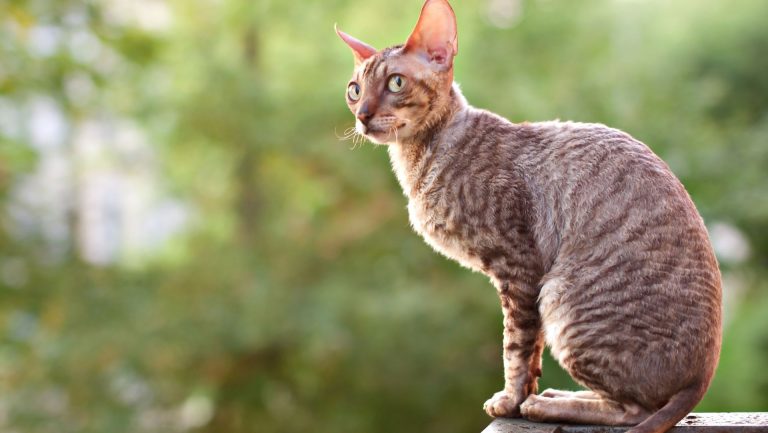These Huge North Carolina Bugs Look Straight Out Of A Horror Movie
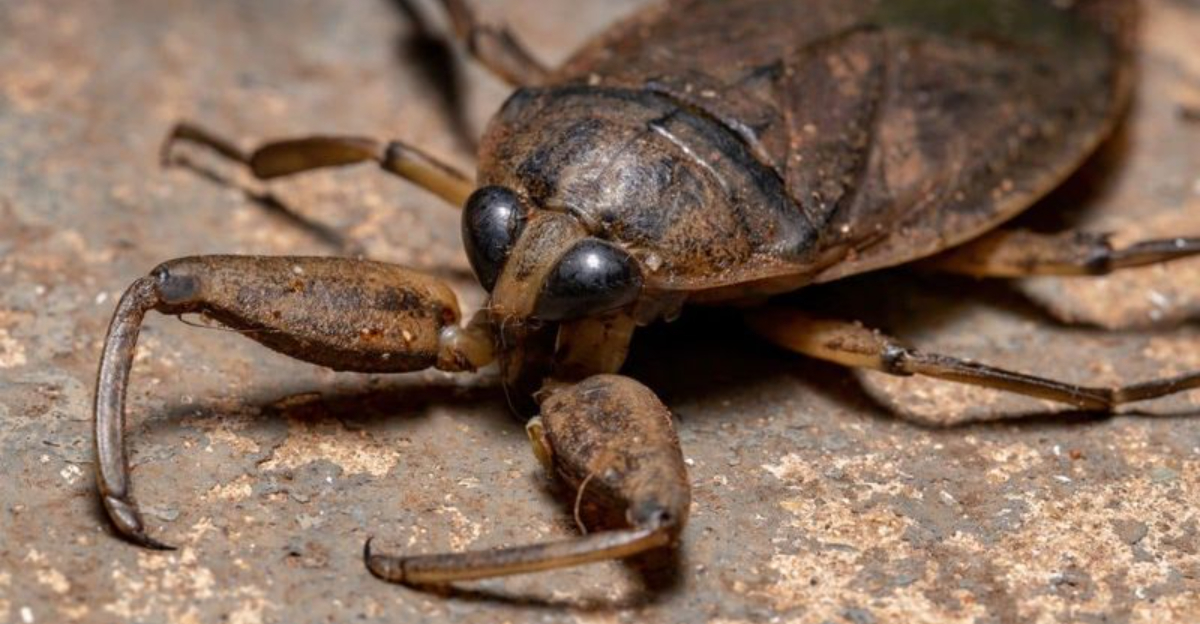
North Carolina’s diverse ecosystems harbor some truly nightmarish insects that could make your skin crawl. From massive spiders to intimidating beetles, these creatures might seem like they escaped from a movie set.
Ready to discover the creepy crawlies that might be lurking in your backyard? Here are enormous bugs native to North Carolina that look like they belong in horror films.
1. Carolina Wolf Spider
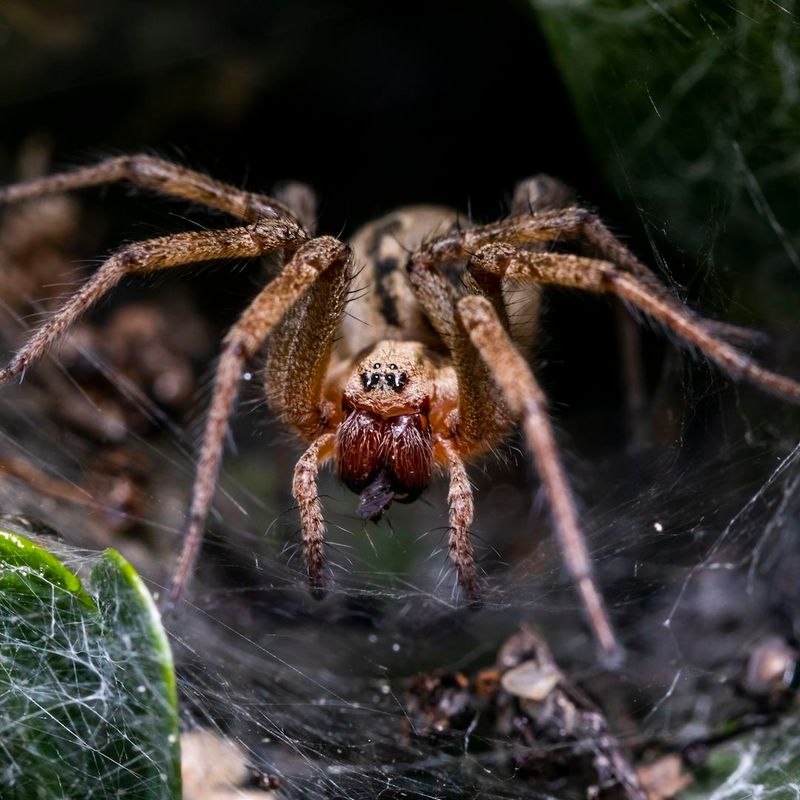
Lurking in leaf litter and woodland areas, these massive arachnids can stretch up to 3 inches across with their legs extended. Their brown, hairy bodies and eight gleaming eyes create an unmistakable silhouette in the night.
Unlike most spiders, wolf spiders don’t build webs but actively hunt their prey. Their exceptional night vision and lightning-fast movements make them efficient predators that strike fear into both insects and humans alike.
2. Eastern Lubber Grasshopper
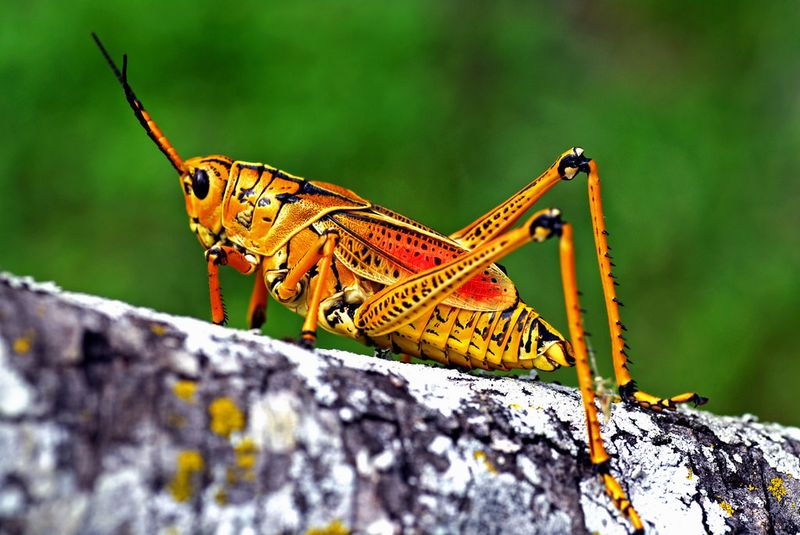
Sporting a vibrant yellow body with striking black stripes, these chunky grasshoppers command attention at an impressive 4 inches long. Their bold warning coloration serves as nature’s caution sign – they’re toxic to most predators.
During summer months, they congregate in gardens and fields throughout North Carolina. When threatened, they spread their wings to reveal vivid red and black patterns while secreting a foul-smelling foam that deters even the bravest predators.
3. Wheel Bug
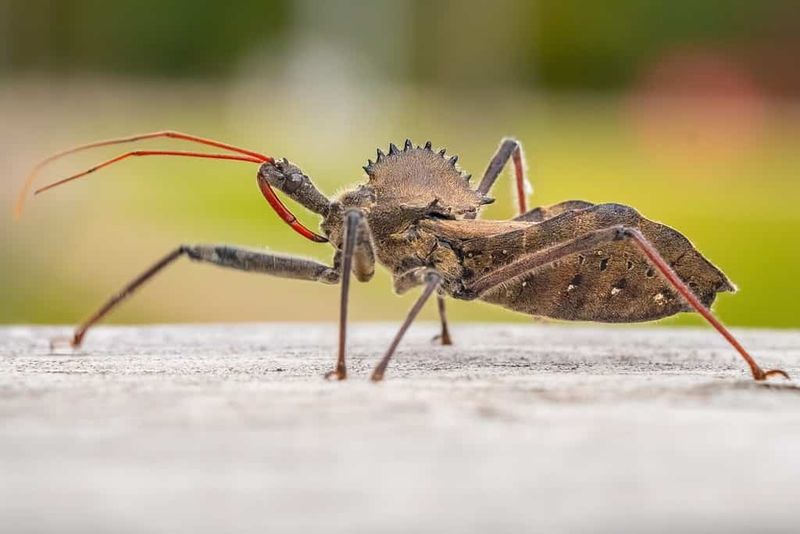
The bizarre gear-like crest on this assassin bug’s back makes it look like a steampunk nightmare come to life. Moving with deliberate slowness through North Carolina gardens, its long proboscis remains tucked beneath its body, until mealtime.
Don’t be fooled by its methodical movements. When hunting, the wheel bug transforms into a swift killer, stabbing prey with its beak and injecting paralyzing saliva. The resulting bite feels like a white-hot nail driven into your skin, earning it wide berth from knowledgeable gardeners.
4. Cicada Killer Wasp
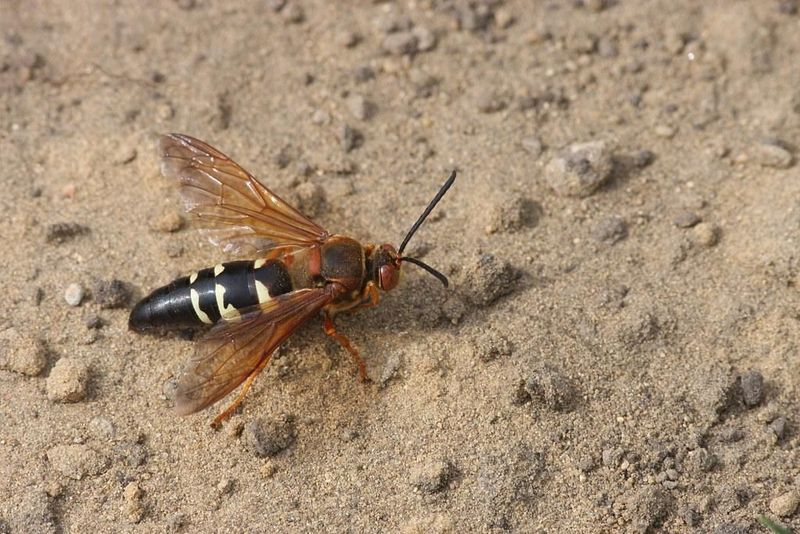
Swooping through summer skies at nearly 2 inches long, these black and yellow wasps inspire terror despite their generally peaceful nature toward humans. Males lack stingers entirely, while females save their painful stings for cicadas rather than people.
Female cicada killers dig impressive burrows up to 10 inches deep in North Carolina’s sandy soils. After paralyzing a cicada mid-flight, she carries the victim, often heavier than herself, back to her underground chamber where her larvae will feed on the living but paralyzed insect.
5. Giant Water Bug
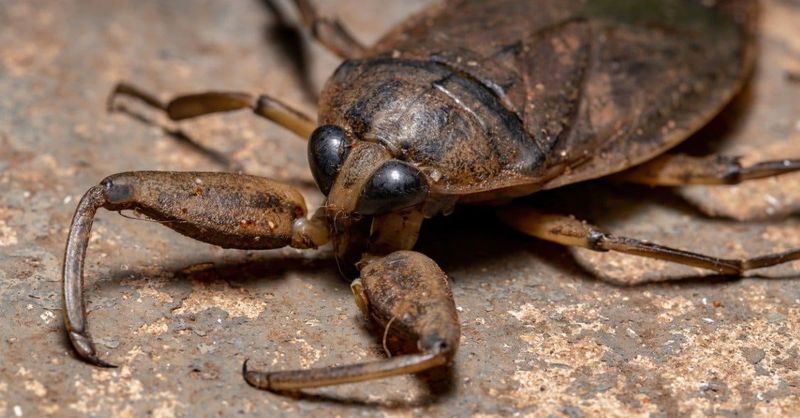
Known as ‘toe-biters’ for good reason, these aquatic hunters lurk in North Carolina’s ponds and slow-moving streams. Their flat, oval-shaped bodies reach up to 4 inches long, equipped with powerful front pincers that deliver excruciating bites.
These ambush predators can even take down small fish, frogs, and snakes! They inject digestive enzymes into their prey, liquefying internal organs before sucking out the contents, a feeding strategy straight from science fiction.
6. Brown Recluse Spider
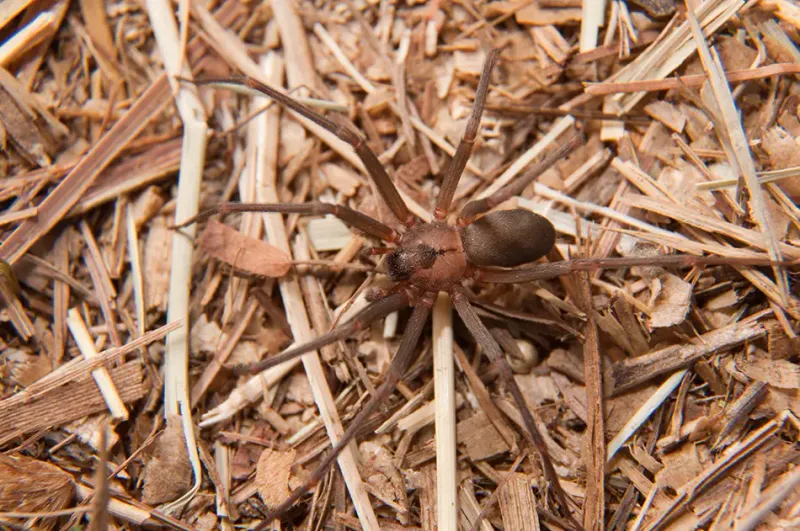
Hiding in undisturbed corners of North Carolina homes, this unassuming spider carries one of America’s most dangerous venoms. The distinctive violin-shaped marking on its back serves as nature’s warning label for its tissue-destroying bite.
Unlike aggressive spiders, the brown recluse lives up to its name, preferring isolation over confrontation. Its six eyes (rather than the typical eight) and uniformly colored legs help identify this venomous visitor before an unfortunate encounter occurs.
7. Eastern American Tarantula
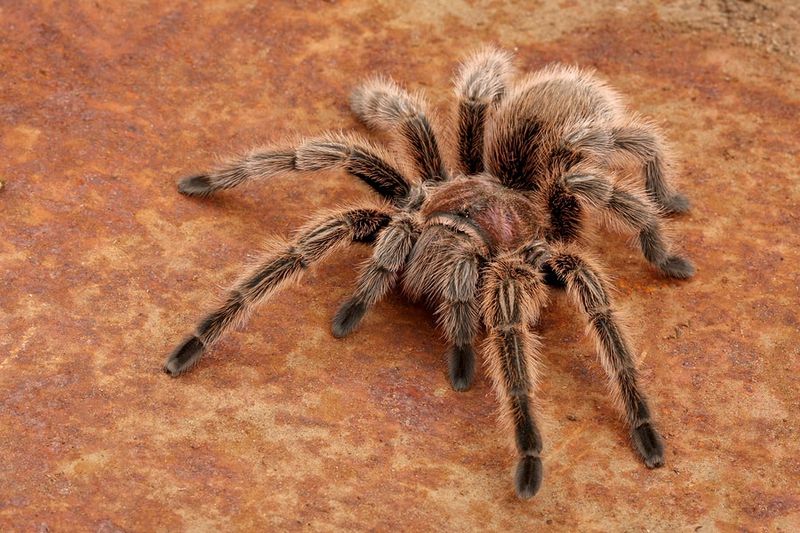
Though rare in North Carolina, these magnificent arachnids occasionally appear in the western regions of the state. Their impressive 4-inch leg span and dense coat of hair trigger immediate fear responses in most humans, despite their relatively docile nature.
Moving with deliberate slowness, these nocturnal hunters rely on vibration sensors in their legs to detect nearby prey. Unlike their tropical cousins, our native tarantulas prefer ground burrows to tree dwelling, creating silk-lined tunnels where they patiently wait for unsuspecting insects.
8. Pine Sawyer Beetle
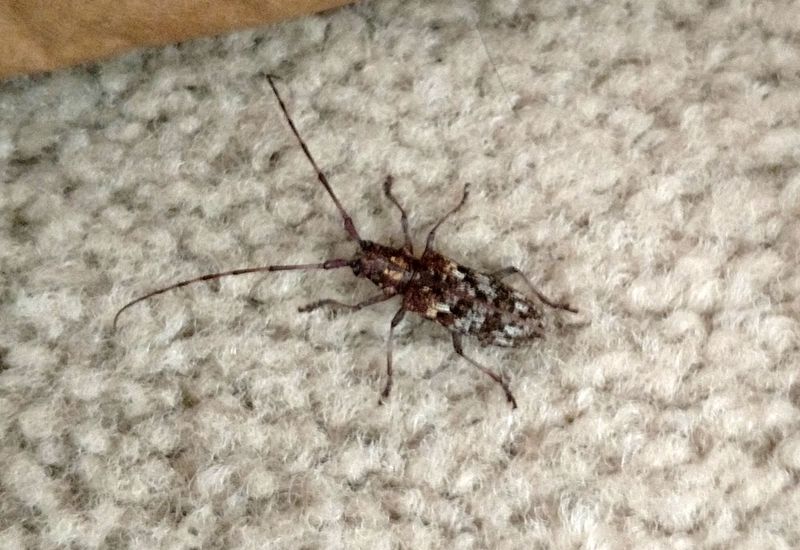
Emerging from North Carolina’s pine forests like alien visitors, these beetles sport antennae twice as long as their already substantial 2-inch bodies. Their spiny, armored exoskeletons and deliberate movements give them an otherworldly appearance that startles unsuspecting hikers.
Though intimidating, these remarkable insects play a crucial ecological role by helping decompose dead pine trees. The distinctive creaking sound they produce when disturbed, created by rubbing body parts together, adds to their horror-movie persona.
9. American Cockroach
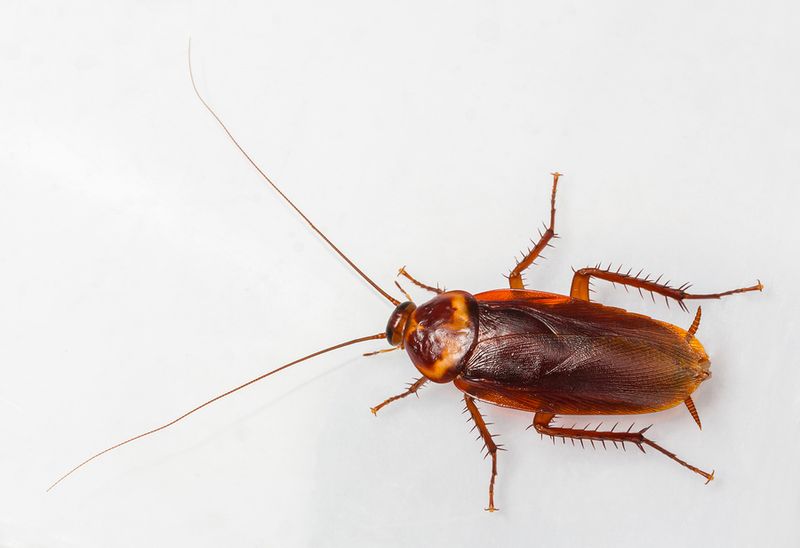
Scuttling across kitchen floors at alarming speeds, these 1.5-inch invaders have mastered the art of appearing exactly when you’re most vulnerable, like during midnight snack runs. Their reddish-brown shells gleam under sudden light, freezing momentarily before vanishing into impossible crevices.
Capable of holding their breath for 40 minutes and surviving headless for weeks, these prehistoric-looking insects embody resilience. Their ability to flatten their bodies to the thickness of a quarter allows them to squeeze through gaps barely visible to the human eye.


